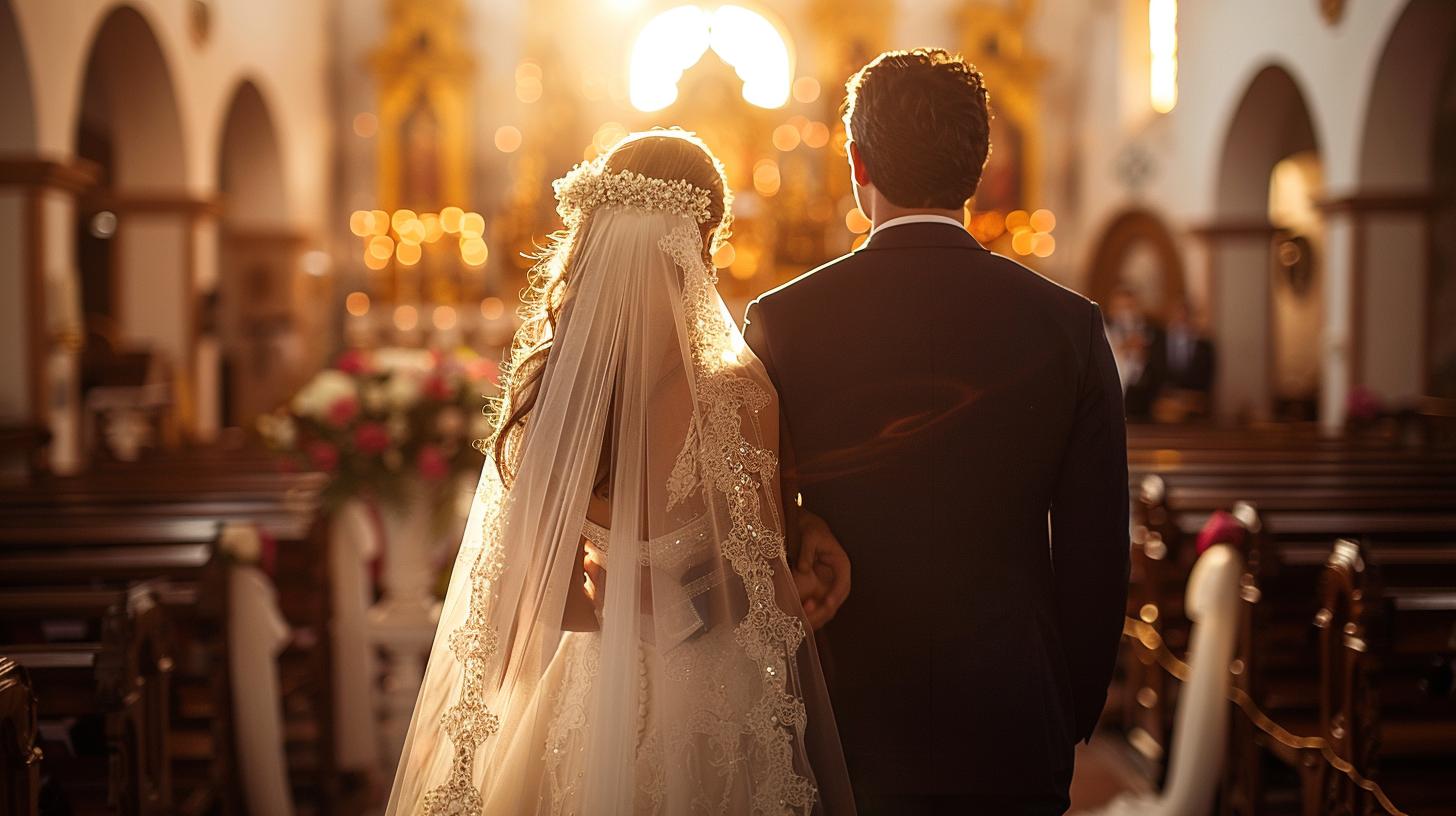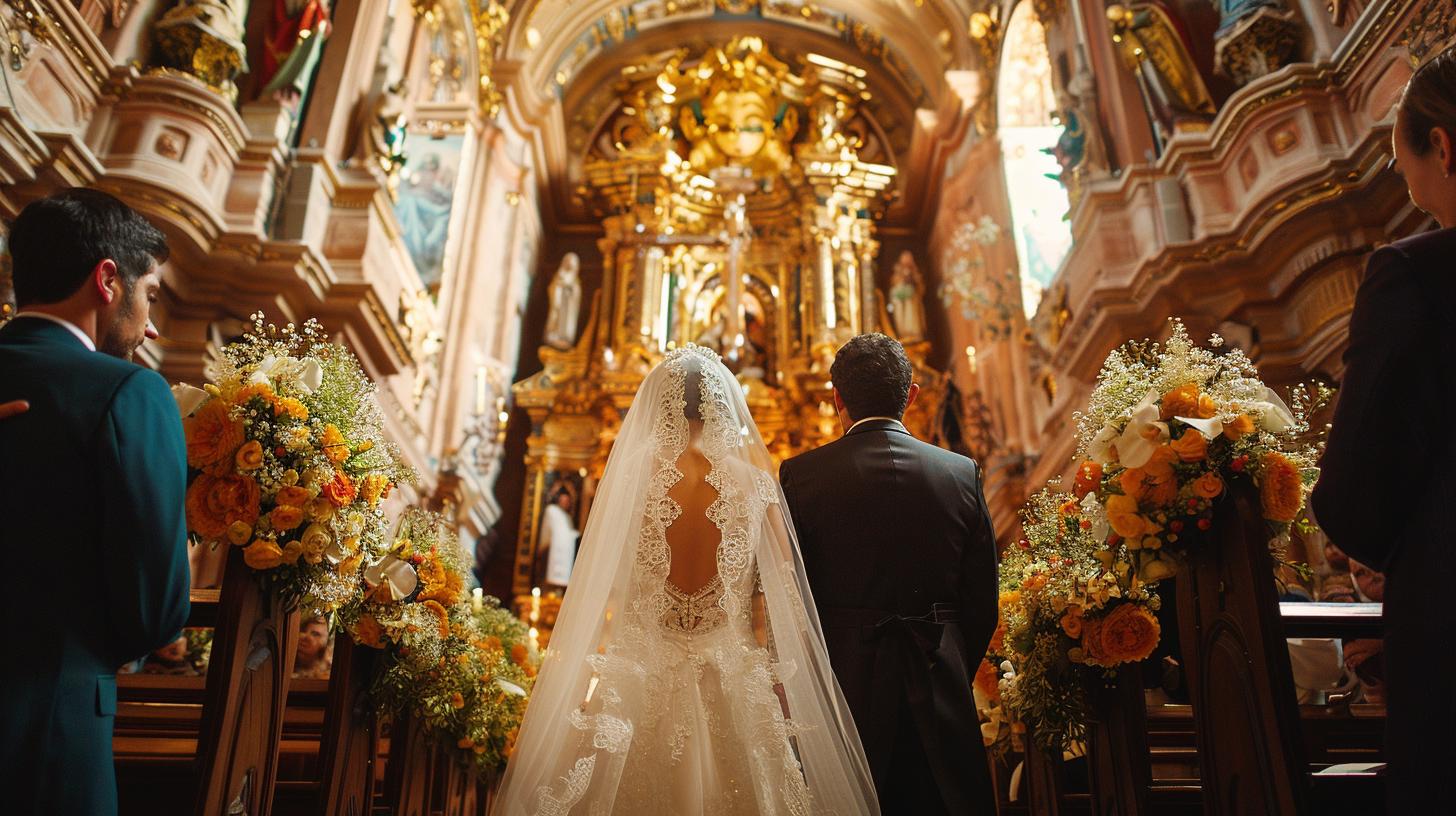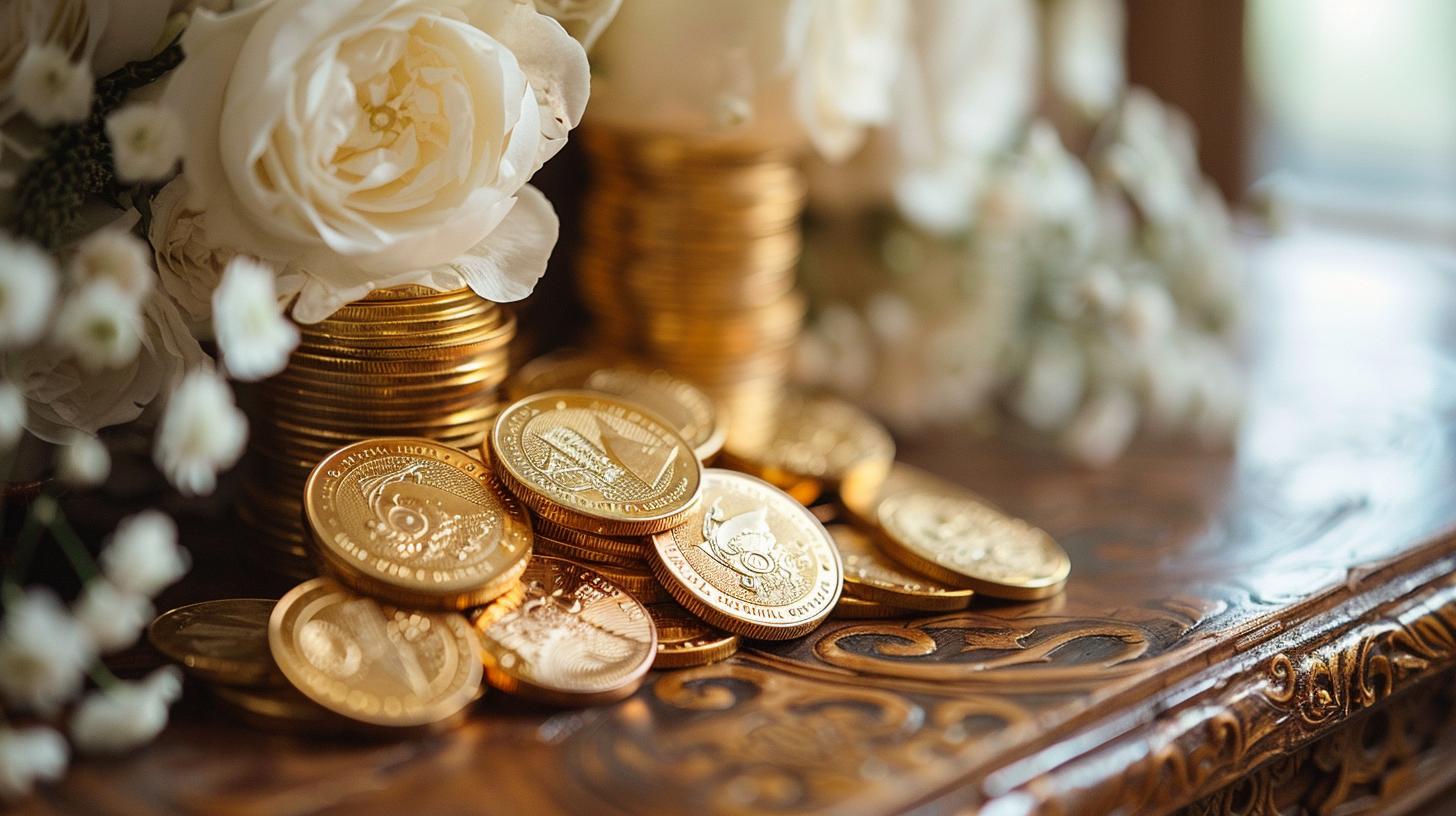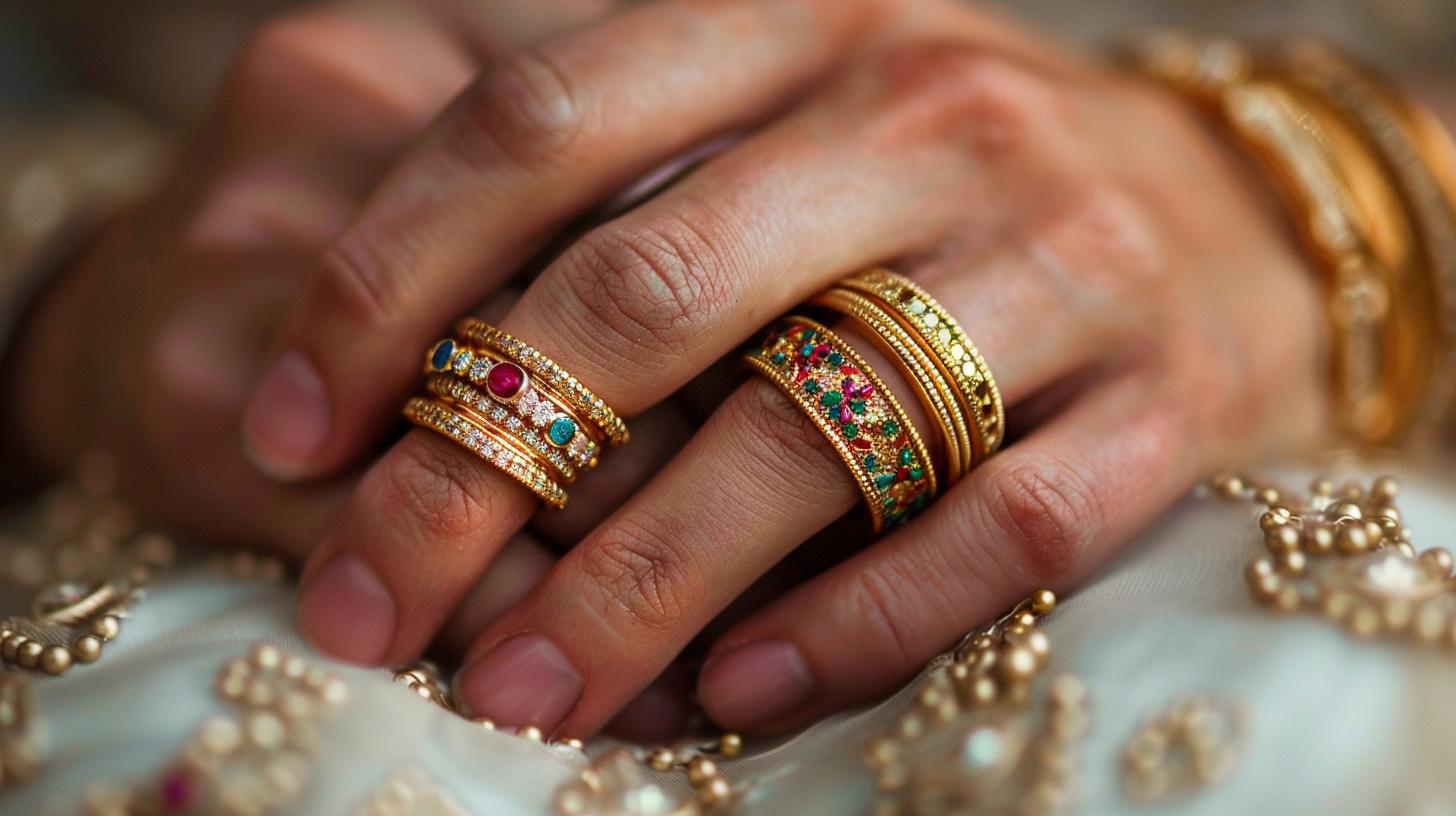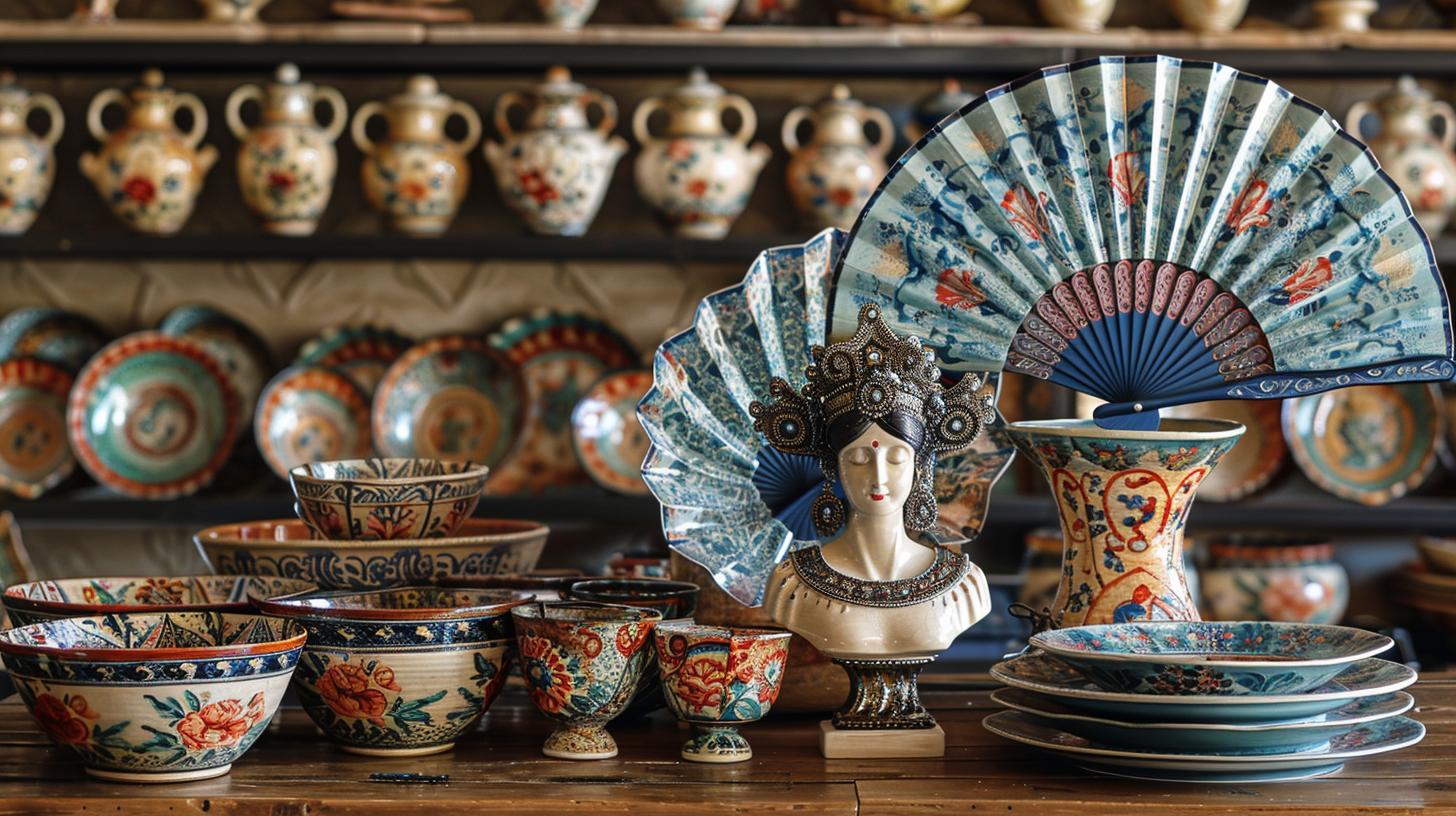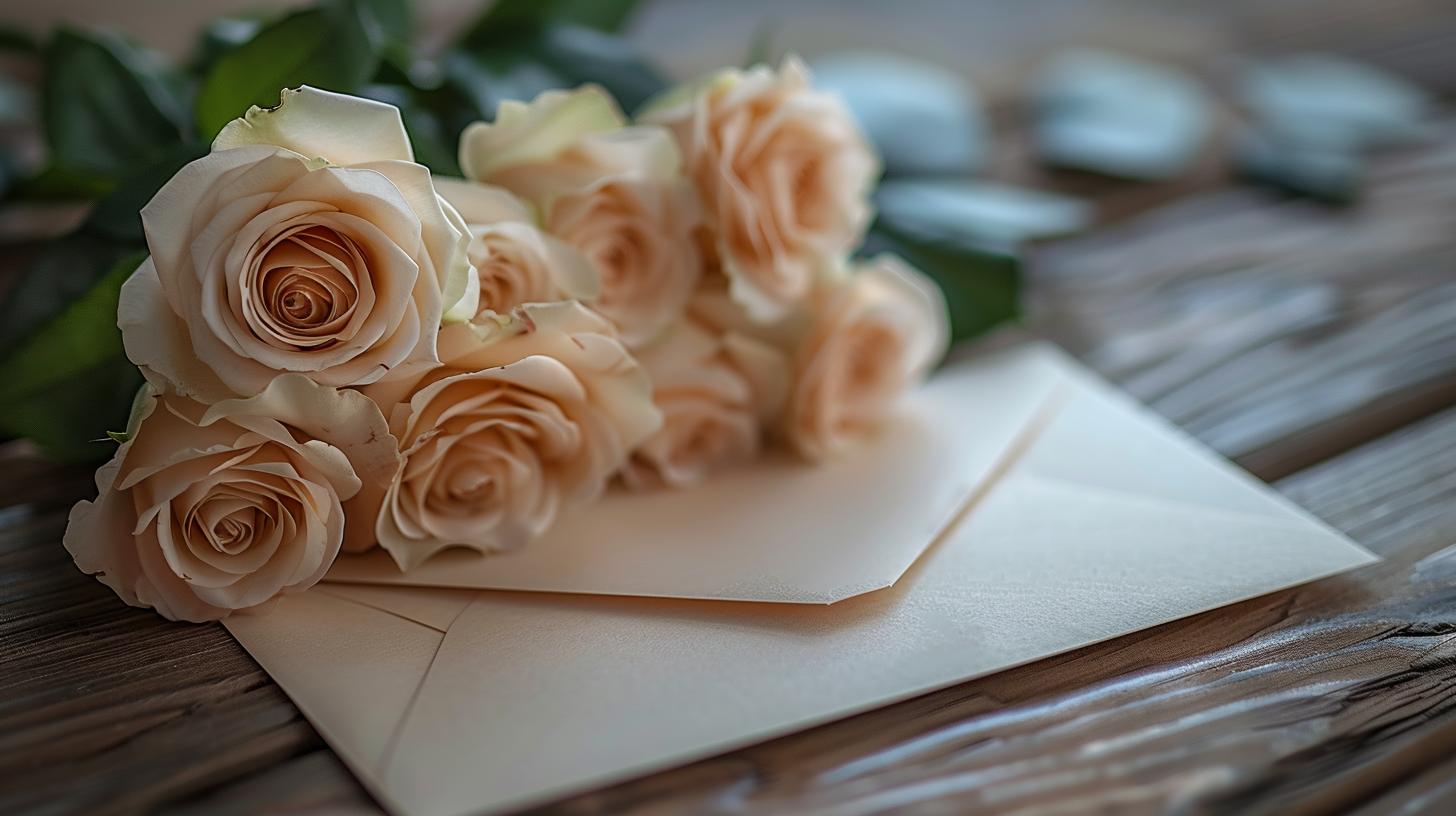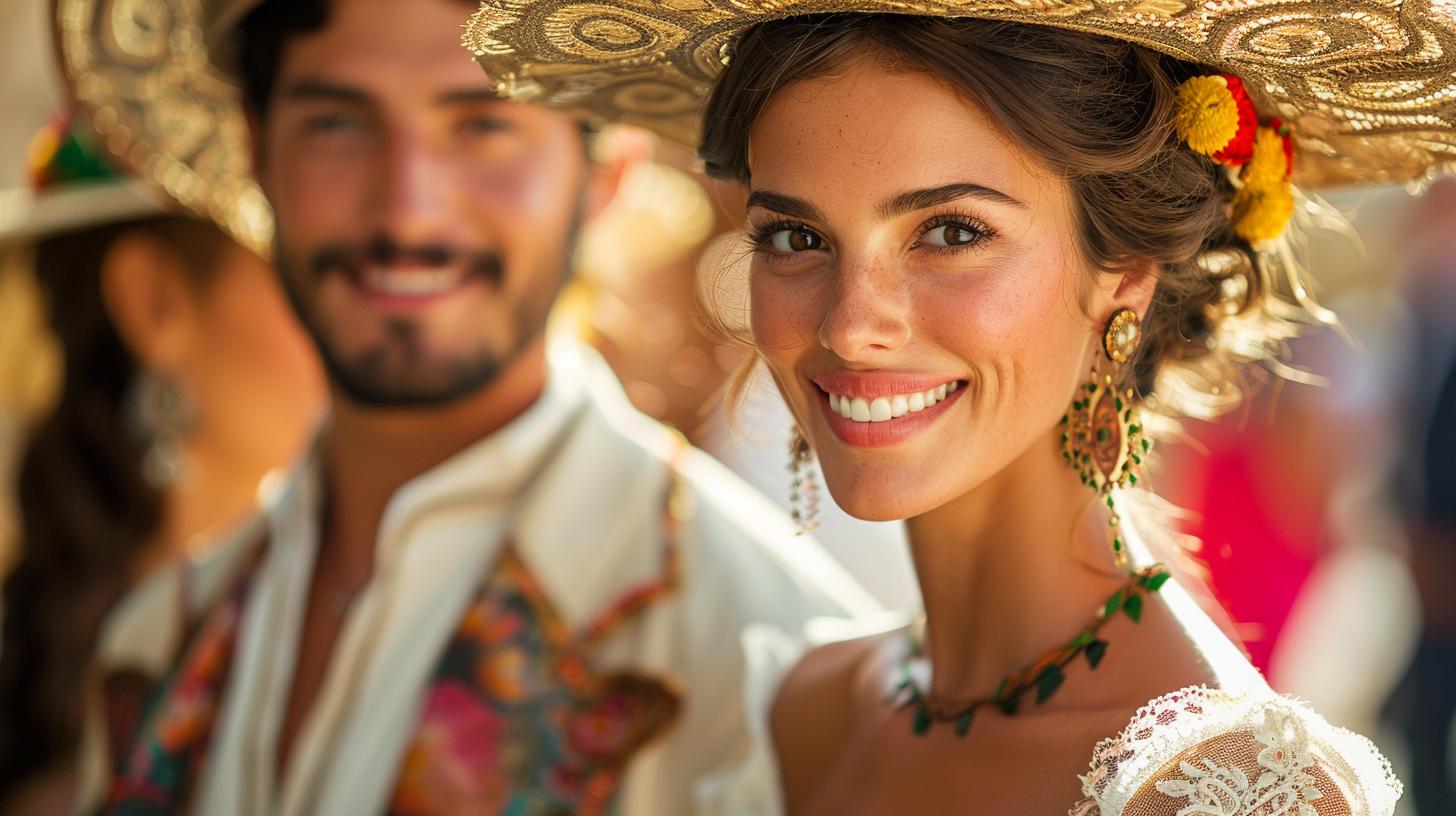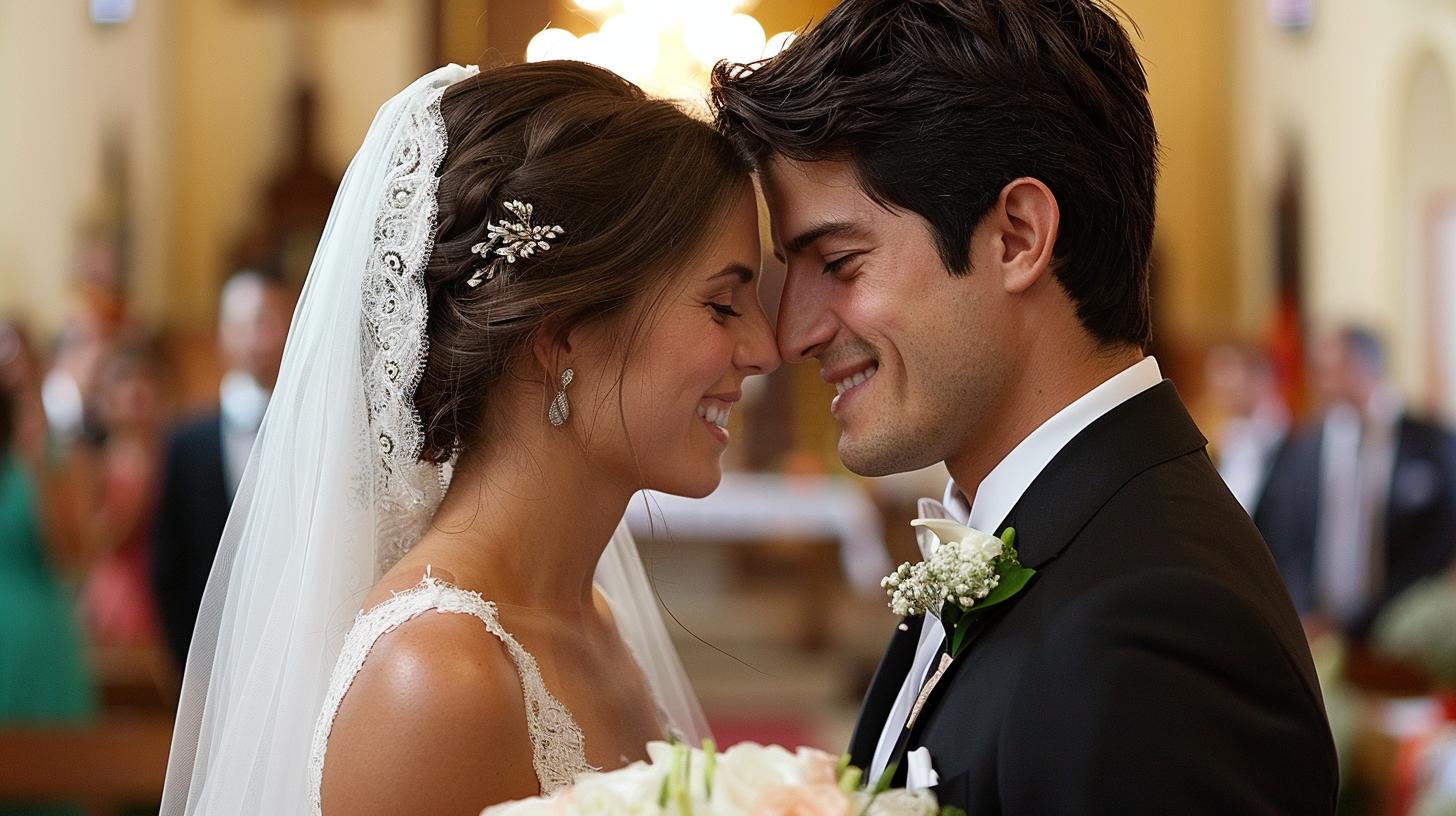Spanish Wedding Ceremony Traditions: A Dive into the Romance and Culture of Spain’s Nuptials
Spanish Wedding Ceremony Traditions are deeply rooted in romance and culture, with each detail holding special significance. From the exchange of rings and coins to the use of orange blossoms in decor, these traditions add a unique touch to Spanish weddings.
The joy and devotion shared by the couple and their families are palpable, especially during significant moments like the ceremony and the reception. The importance of the Spanish wedding tradition cannot be overstated, as it encapsulates the essence of love and commitment in a beautifully orchestrated event.
In the context of prosperity for the couple, these rituals symbolize not just love, but also a shared future filled with hope and abundance.
Padrinos play a crucial role, while traditional dishes like paella and the iconic mantilla veil are integral to the celebrations.
Whether attending a wedding in Spain or planning a destination wedding there, understanding these traditions enhances the experience. The wedding flowers, with their vibrant colors, often symbolize the love blooming between the couple, and gatherings like weddings are a big part of Spanish culture and community life.
The presence of orange trees, with their sweet fragrance, is commonly served, adding to the festive atmosphere and creating a picturesque setting that you can see in many traditional Spanish weddings.
Spanish Wedding Ceremonies: An Overview
Spanish weddings are steeped in tradition and rich cultural elements that add depth and significance to the nuptials. From the attire worn by the bride and groom to the symbolic gestures and customs observed throughout the ceremony, Spanish wedding ceremonies are a beautiful blend of history and romance, showcasing the enduring Spanish wedding tradition that has been cherished for centuries.
The exchange of vows, including Spanish wedding vows, represents a commitment that extends beyond the ceremony, binding the couple in a partnership that is celebrated not just by the two, but by all their wedding guests.
Importance of Tradition in Spanish Weddings
- Tradition plays a vital role in Spanish weddings, with many customs and rituals being passed down through generations.
- These traditions help connect the couple to their heritage and create a sense of continuity and belonging.
- From the exchange of rings and coins to the use of orange blossoms in the decor, each tradition has a special meaning.
Significance of Cultural Elements
- Cultural elements such as the mantilla veil and the traditional wedding dance add a unique and authentic touch to Spanish weddings.
- These elements showcase the beauty and diversity of Spanish culture, making the ceremony a true reflection of the couple’s roots.
- By incorporating these cultural elements, couples are able to honor their heritage and celebrate their love in a meaningful way.
Traditional Spanish Wedding Attire
The Bride’s Dress and Accessories
The bride’s dress in a Spanish wedding is typically elaborate and elegant.
Spanish brides often choose dresses that highlight their unique style while incorporating traditional elements. They commonly wear their dresses adorned with intricate lace details and luxurious fabrics, while accessories like a mantilla veil and ornate combs are commonly worn to complement the dress, adding a touch of traditional Spanish flair to the bride’s ensemble.
Additionally, the tradition of wearing the veil symbolizes purity and the transition from girlhood to womanhood, which is a significant part of the wedding in Spain traditions.
The Groom’s Attire
The groom’s attire in a traditional Spanish wedding is classic and sophisticated. A well-tailored suit or tuxedo in a timeless style is the norm, often paired with a crisp white shirt and polished shoes.
Accessories like a boutonniere or a pocket square add a touch of elegance to the groom’s look, making him ready for the special occasion. His tie often reflects the colors of the wedding theme, adding to the overall aesthetic of the wedding party, which includes bridesmaids and groomsmen who also wear carefully coordinated outfits.
Symbolic Gestures and Customs
In Spanish wedding ceremonies, various symbolic gestures and customs add depth and meaning to the celebration. One of the most cherished moments is the exchange of vows, where the couple expresses their love and commitment to each other through beautifully crafted Spanish wedding vows.
These vows are often recited in front of family and friends, reinforcing the bond not just between the couple, but also with their loved ones.
Exchange of Rings and Coins
During the exchange of rings, the couple promises their commitment and love to each other, symbolizing their union. The rings, placed on the ring finger, represent eternity, while the coins signify shared wealth and responsibility.
The tradition of exchanging the coins, known as arras, is a common practice in Catholic weddings in Spain and symbolizes the couple’s dedication to supporting each other financially and emotionally.
- Couples exchange gold coins, known as arras, representing their shared responsibilities and future prosperity.
- The rings and coins exchange is a cherished tradition that highlights the couple’s commitment and unity.
Use of Orange Blossoms in Decor
Orange blossoms are often used in wedding decor to symbolize purity, fertility, and eternal love.
They are a common sight in traditional Spanish weddings, beautifully complementing the overall aesthetic of the ceremony. The floral arrangements, especially the wedding flowers, play a big part in creating a romantic atmosphere that enchants everyone present.
The rituals often include the presence of the padrinos, who play a significant role in guiding the couple through various customs. The entire event is a celebration of love, faith, and community, highlighting the significance of the couple’s vows in front of Jesus and his teachings, which further unites them in their journey together.
The ceremony typically takes place in a church, where vows are exchanged and blessings are bestowed upon the newlyweds. Catholic weddings in Spain often include the padrinos, who are chosen from close family or friends to support the couple throughout their marriage.
The head table is often adorned with beautiful decorations, representing the couple’s journey and their commitment to each other.
Some common Catholic wedding traditions in Spain include:
- Receiving the sacrament of marriage
- Lighting unity candles
- Receiving blessings from the priest
Symbolic Acts and Rituals
Symbolism plays a significant role in Spanish wedding ceremonies, with various acts and rituals carrying special meanings.
For instance, the act of placing the rings on the ring finger and the exchange of vows are common for all couples. The bride the groom often share a moment of reflection, expressing their love and commitment to one another.
These symbolic gestures add depth and tradition to the marriage celebration, creating a unique and memorable experience for all involved. The wedding party often includes bridesmaids and groomsmen, who support the couple throughout the festivities, ensuring that the day is filled with joy and love.
Friends and family gather to witness the union, making it a day filled with joy and happiness.
- Exchanging wedding rings as a symbol of eternal love
- Sharing arras matrimoniales to represent shared financial responsibilities
- Participating in the lazo ritual, symbolizing unity and eternity
Festivities and Celebrations
Traditional Dishes and Drinks
Spanish weddings are known for their delicious traditional dishes and drinks.
Some popular dishes include paella, a flavorful rice dish cooked with saffron and a variety of seafood or meat. Other common options are gazpacho, a refreshing cold soup made with tomatoes, peppers, and cucumbers, and churros served with rich chocolate sauce for dessert.
Couples often include some Spanish weddings delicacies to enhance their celebration. The wedding reception is a time when guests can indulge in these culinary delights, creating an unforgettable experience.
- Tasty paella
- Refreshing gazpacho
- Indulgent churros
Traditional Wedding Dance
The traditional wedding dance in Spain is a lively and colorful affair that brings everyone to the dance floor.
Couples often perform a Flamenco dance, showcasing intricate footwork and emotional expression. The couple during the wedding often dances to traditional songs that represent joy and happiness, symbolizing the beginning of their new life together.
This celebration is not just a reflection of their love but also a representation of their families coming together.
- Passionate Flamenco dance
- Energetic Sevillanas
- Dramatic Paso Doble
Incorporating Modern Elements
When it comes to weddings in Spain, blending tradition with contemporary trends is a way to create a unique and memorable experience.
Couples often seek to personalize their wedding day, infusing it with modern elements that reflect their personalities and preferences. From stylish decor to innovative cuisine, modern touches can elevate the celebration and make it truly unforgettable.
Couples may choose to save the dates in a unique way that reflects their shared interests.
Blending Tradition with Contemporary Trends
Blending tradition with contemporary trends is a delicate balancing act that many couples aim to achieve. By incorporating elements of both the old and the new, weddings in Spain can maintain their cultural roots while embracing modern sensibilities.
For instance, some Spanish weddings may choose to incorporate traditional Spanish wedding flowers, adding a touch of elegance and color to the ceremony. The couple during the wedding can also choose floral arrangements that resonate with their personal style.
Personalizing the Wedding Experience
From custom decorations to personalized ceremony rituals, there are endless opportunities to infuse the event with personal touches that reflect the couple’s love story and shared interests. Couples can opt to wear their engagement rings on the right hand as a symbol of their commitment, while also including their friends and family in the celebration to enhance the sense of community and joy.
The wedding ceremony often includes traditional rituals, such as exchanging the coins from the padrinos, symbolizing fertility and prosperity for the newlyweds. The coins are often presented in a decorative box, emphasizing the significance of shared wealth and responsibility.
Destination Weddings in Spain
Planning a Wedding Abroad
Planning a destination wedding in Spain involves arranging various aspects to ensure a smooth and memorable event. Considerations include selecting the venue, coordinating with local vendors, and understanding legal requirements. Hiring a wedding planner familiar with the area can simplify the process and offer valuable insights.
The couple has to think about every detail, from the wedding and reception venues to the floral arrangements and catering, including traditional Spanish wedding food for their guests. This attention to detail ensures that every moment is special and reflects the couple’s vision for their special day.
Considerations for a Spanish Destination Wedding
When planning a destination wedding in Spain, couples should take into account factors such as the weather, local customs, and language barriers. Choosing a location that reflects the couple’s style and preferences is essential, whether it’s a beachfront ceremony in Ibiza or a historic celebration in Barcelona.
One important aspect of a Spanish destination wedding is the incorporation of Spanish wedding traditions. These traditions can add depth and cultural significance to the ceremony, making it a memorable experience for both the couple and their guests.
For instance, the tradition of the “lazo,” where a decorative rope or cord is placed around the couple to symbolize their union, can be a touching moment during the ceremony.
Additionally, guests’ travel arrangements and accommodations should be carefully considered to ensure a seamless experience for everyone involved.
Couples can also include unique traditions that represent Jesus and other meaningful symbols, such as throwing the bouquet or sharing rose petals during the ceremony to celebrate love and unity, enhancing the joyous atmosphere of their special day.
Embracing these Spanish wedding traditions not only honors the local culture but also strengthens the bond between the couple and their loved ones.
.

